Zoom ZDTV Wireless Keyboard 9006 Handleiding
Zoom
Toetsenbord
ZDTV Wireless Keyboard 9006
Bekijk gratis de handleiding van Zoom ZDTV Wireless Keyboard 9006 (6 pagina’s), behorend tot de categorie Toetsenbord. Deze gids werd als nuttig beoordeeld door 73 mensen en kreeg gemiddeld 4.2 sterren uit 37 reviews. Heb je een vraag over Zoom ZDTV Wireless Keyboard 9006 of wil je andere gebruikers van dit product iets vragen? Stel een vraag
Pagina 1/6

Z D T V W I R E L E S S K E Y B O A R D Q U I C K S T A R T
Z D T V W I R E L E S S K E Y B O A R D Q U I C K S T A R T
Z D T V W I R E L E S S K E Y B O A R D Q U I C K S T A R T
Z D T V W I R E L E S S K E Y B O A R D Q U I C K S T A R T Z D T V W I R E L E S S K E Y B O A R D Q U I C K S T A R T
This Quick Start describes how to use your wireless keyboard with any Xbox 360 or PS3 gamebox; or with a Windows
7, Vista, or XP PC. It also describes how to enjoy special features of the keyboard when connect a Windows 7, Vista,
or XP computer to an HDTV.
Step 1: Installing the keyboard batteries and powering ON the keyboard
1
1
1
11 On the bottom of the keyboard, push the arrow on the edge of the door away from the keyboard. The door will
open. Install two AAA batteries, making sure to position the Plus side of each battery as shown in the keyboard’s
battery container and the illustration below. Make sure the batteries are seated securely. Now close the door by
first inserting it and then pressing it toward the keyboard.
2
2
2
22 To power ON the keyboard, turn the power switch located on the back of the keyboard from OFF to ON.
Step 2: Mating the keyboard to a gamebox or computer and using the keyboard
If your computer or other device isn’t already running, power it up now. To pair the keyboard with your gaming device
or computer, plug the USB dongle into an available USB port.
USB dongle
Note for Windows PCs: The wireless keyboard will automatically
identify itself to your PC’s Windows operating system or other device.
You may see a message such as, “Found New Hardware.” To start
using your keyboard, simply press one of the keyboard’s keys.
If you unplug the USB dongle and you later plug it back in, it will automatically pair up with the keyboard. If for some
reason the keyboard doesn’t work (for instance, the batteries were replaced) simply repeat the pairing described
above.
Waking up the keyboard
The keyboard conserves its batteries by automatically going into a low-power mode when you haven’t used it for about
5 minutes. To wake it back up, simply press one of the keyboard’s keys.
Keyboard features
LEDs
When lit, the LEDs on the top right of your ZDTV keyboard indicate the following:
1 A
Number lock Caps lock Low Batteries
Touchpad and left and right buttons
An integrated touchpad and left and right touchpad buttons are on the right-side of the ZDTV keyboard. These are
used with Windows computers, not gameboxes.
Mute audio
Congratulations! If you are using an Xbox 360 or PS3, the keyboard is ready to use.

If you are already connected to an HDTV and are satisfied with the screen resolution, you are ready to use the ZDTV keyboard and
do not need to proceed any further. Otherwise, proceed with Step 3 below.
Special Touchpad features:
Goal Action
Move cursor Slide your finger
Left click Tap one finger on the touchpad or use the left-click button
Middle click Tap two fingers on the touchpad
Right click Tap 3 fingers on the touchpad or use the right-click button
Double left click Double tap one finger on the touchpad
Drag Double tap the touchpad and then slide your finger
Vertical scroll Slide 2 fingers vertically
Step 3: Connecting an HDTV to your computer
For Windows 7
If you have a Windows 7 computer with an HDMI port, we highly recommend that you try using the computer with an HDTV and the
wireless keyboard. This is particularly convenient with a notebook or small desktop computer. We want you to be able to enjoy all
your computer has to offer, including the Internet, from your favorite chair. Special functions on the keyboard, including Magnify
features, work with our software to make using it with an HDTV easy and fun.
1
1
1
11 Most HDTV sets have an HDMI port. If your HDTV does have an HDMI port, plug an HDMI cable into a free HDMI port on the
HDTV.
2
2
2
22 Plug the other end of the cable into an HDMI port on your computer. If all your HDTV’s HDMI ports are used, ZDTV may have
to share an HDMI input with a DVD player or other device. (If your Windows 7 computer does not have an HDMI port, you can
try connecting to an HDTV using a VGA or DVI video connection. You may get acceptable performance, depending on the
capabilities of your computer and HDTV, but some ZDTV features may not work correctly.)
3
3
3
33 Your HDTV remote or a button on your HDTV lets you select the TV’s input. Typically you press Source, Input, or a similarly-
named button on your remote or HDTV to select among your set-top box, DVD / BD player and other devices. Selecting your
computer for the screen input is similar to selecting a DVD player the HDTV input. Check to make . Select your computer as
sure that you see your computer’s Windows desktop on your HDTV.
4
4
4
44 You will see the message New Display Detected. Select Show my desktop on the external display only. Select Apply and
then select OK.
For Windows Vista
Note: Windows Vista users with Desktop PCs should connect only the HDTV; no other monitor or display should be connected at
the same time.
1
1
1
11 Your PC may offer a DVI connector. If it does, use a DVI to HDMI cable to connect your PC to your HDTV. Otherwise, in most
cases, your PC will have a VGA port. Connect this port to a VGA input port on your HDTV.
When using an HDMI to HDMI cable, you will see the message New Display Detected. Select Show my desktop on the
external display only. Select Apply and then select OK.
Note: If you connect via DVI or VGA, you will separately need to make an audio connection.
2
2
2
22 Your HDTV remote or a button on your HDTV lets you select the TV’s input. Typically you press Source, Input, or a similarly-
named button on your remote or HDTV to select among your set- other devices. Selecting your top box, DVD / BD player and
computer for the screen input is similar to selecting a DVD player. Select your computer as the HDTV input. If you have
connected via VGA, often this will be labeled “PC.” Check to make sure that you see your computer’s Windows desktop on your
HDTV.
3
3
3
33 Power up your computer if it isn’t already on. If you can’t see a display on your HDTV, or the picture doesn’t look ideal, go to
Step 5: Optimizing Screen Settings when you connect your PC to your HDTV. Then come back to Step 4: Installing the
ZDTV software. Otherwise, continue with Step 4: Installing the ZDTV software.
For Windows XP
Note: Windows XP users with Desktop PCs should connect only the HDTV; no other monitor or display should be connected at
the same time.
1
1
1
11 In the vast majority of cases, your PC will have a VGA port. Connect this port to a VGA input port on your HDTV.
Note: You will separately need to make an audio connection.
2
2
2
22 Your HDTV remote or a button on your HDTV lets you select the TV’s input. Typically you press Source, Input, or a similarly-
named button on your remote or HDTV to select among your set-top box, DVD / BD player and other devices. Selecting your
computer for the screen input is similar to selecting a DVD player. Select your computer as the HDTV input. If you have connected
via VGA, often this will be labeled “PC.” Check to make sure that you see your computer’s Windows desktop on your HDTV.
3
3
3
33 Power up your computer if it isn’t already on. If you can’t see a display on your HDTV, or the picture doesn’t look ideal, go to
Step 5: Optimizing Screen Settings when you connect your PC to your HDTV. Then come back to Step 4: Installing the
ZDTV software. Otherwise, continue with Step 4: Installing the ZDTV software.

Step 4: Installing the ZDTV software if you have a CD ROM drive in your computer
For Windows 7, Vista, and XP
Make sure your computer is on and connected to the Internet, and that you are logged on to an account with administrative
privileges. The CD that came with your keyboard should run automatically when inserted into your computer’s CD/DVD ROM drive.
If it does not, go to the Start menuÆ All ProgramsÆ AccessoriesÆ Run and type
E:Setup.exe where E: is the letter of your
CD ROM drive.
Follow the on-screen instructions to complete the software installation.
If the keyboard times out during any phase of the installation process, press the Fn key to re-activate the keyboard.
Note: If you get a message stating “This program might not have installed correctly" you should click on “This program installed
correctly”.
If you are prompted to enter a 4-character Activation Code during software installation, please enter ZDTV. If a dialog box appears
to upgrade ZDTV, select Upgrade Now and click Continue.
Activation Code: ZDTV
Installing ZDTV software if you don't have a CD ROM drive in your computer
You will need to download the ZDTV software from the Zoom website. Make sure your computer is connected to the Internet. Open
a browser and type http://zdtv.zoomtel.com/download in your browser's address bar.
Follow the on-screen instructions to download and install the software on your computer.
If the keyboard times out during any phase of the installation process, press the
Fn key to re-activate the keyboard.
Step 5: Optimizing Screen Settings when you connect your PC to your HDTV
For Windows 7
Double-click the ZDTV icon on your Windows desktop to launch the ZDTV software that was installed. The first time you do this,
the Screen Setup Wizard will run. Answer the Wizard’s simple questions to set up your computer for your HDTV. If you are using a
notebook, keep the lid open while you do this. The ZDTV wizard will turn off your notebook’s screen and adjust video settings for
the best possible picture on your HDTV. You may close your laptop’s lid when instructed below.
You may be asked to change your HDTV’s video setting for the HDTV input that connects to your computer. Depending on the
model of your TV, you may find HDTV screen adjustment settings under one of these video menu titles: Aspect, Format, Picture
Format, Screen, Picture Size, Size, Viewing Modes, View Mode. If you select one of the above, you will see another list of menu
options which will typically include one or more of the following 1:1, 16/9, Aspect, Dot-by-Dot, Full Pixel, Just Scan, Native,
Pixel-by-Pixel, and Screen Fit. Try any of these options that you see on your TV’s menu until you find the optimal setting.
If you still have problems with the display - for example, only part of the items located at the edge of the screen are visible, such as
the Start button in Windows (or the circles in squares in the test screen) - try turning off an "overscan" setting. This may be called
overscan, cropping, or something similar. An overscan or cropping setting is likely to appear in a menu close to the one that
controls the screen settings we described above.
If you are using a notebook and you disconnect the HDMI cable from your HDTV, your notebook’s screen will turn on whenever the
notebook is On. Whenever you reconnect your HDTV to your notebook, your notebook will automatically adjust its video display to
turn off the local display and generate the optimal display for your HDTV. You should not have to run the ZDTV Wizard again unless
you use a different HDTV.
If you connect a notebook to your HDTV, ZDTV software ensures that the notebook will not go to standby or shut down
automatically even if the notebook’s lid is closed. This makes it easy to tuck the notebook into a convenient place. If you use a
desktop computer, ZDTV will leave alone any power mode settings you may have set.
If you connect your notebook to a different HDTV, the Screen Setup Wizard may run again. If you need to adjust the screen, click
Help and then Adjust Screen.
Please continue with Step 7: Using your notebook computer with an HDTV.
For Windows Vista users with Notebooks or Desktops
This process may require you to make adjustments to the display settings on your PC and to the Screen or Picture settings on your
HDTV. When you are done you should have the highest resolution picture possible and it should fit neatly within your display.
Note: Windows Vista users with Desktop PCs should connect only the HDTV; no other monitor or display should be connected at
the same time.
Click Start Æ (Settings) ÆControl Panel Æ Appearance and Personalization Æ Personalization Æ Display Settings. (in
Category View)
FOR DESKTOPS ONLY: Continue with Step 6: Adjusting Your Screen Settings.
FOR NOTEBOOKS ONLY: From Display Settings select your HDTV from the drop-down menu. Select the checkbox “This is my
main monitor”. Then select the notebook screen from the drop-down menu. Un-check the box “Extend the desktop onto this
monitor”.
Alternatively, depending on your notebook, you can press the Fn key and F2 or F4 or whichever key has an icon of a screen or the
words CRT/LCD on it to make the HDTV the main display.
Product specificaties
| Merk: | Zoom |
| Categorie: | Toetsenbord |
| Model: | ZDTV Wireless Keyboard 9006 |
| Kleur van het product: | Zwart |
| Gebruiksaanwijzing: | Ja |
| Automatisch uitschakelen: | Ja |
| Connectiviteitstechnologie: | Draadloos |
| Frequentieband: | 2.4 GHz |
| Type stroombron: | Batterij/Accu |
| Ondersteund aantal accu's/batterijen: | 2 |
| Aantal toetsen, toetsenbord: | 78 |
| Certificering: | CE, FCC part 15 |
| Aansluitbereik: | 9.1 m |
| Aansluiting: | RF Draadloos |
| Stroomverbruik: | 8 mA |
| Inclusief muis: | Nee |
| Compatibiliteit: | Playstation 3, Xbox 360, PC |
| USB: | Ja |
| Meegeleverde ontvanger: | Ja |
| Ingebouwde touchpad: | Ja |
| Wireless ontvanger interface: | USB Type-A |
| Dimensies toetsenbord (BxDxH): | 279 x 112 x 18 mm |
| Gewicht toetsenbord: | 281 g |
| Batterijen inbegrepen: | Ja |
| Batterijtechnologie: | Alkaline |
| Type batterij: | AAA |
Heb je hulp nodig?
Als je hulp nodig hebt met Zoom ZDTV Wireless Keyboard 9006 stel dan hieronder een vraag en andere gebruikers zullen je antwoorden
Handleiding Toetsenbord Zoom

20 Juni 2023

24 Maart 2023
Handleiding Toetsenbord
- Philips
- Deltaco
- Doro
- Renkforce
- Natec
- Gamber-Johnson
- Woxter
- Konig
- Anker
- Perfect Choice
- I-onik
- Watson
- Trust
- UNYKAch
- Viper
Nieuwste handleidingen voor Toetsenbord
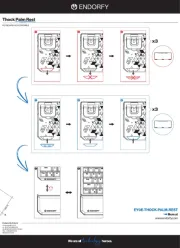
30 Juli 2025

29 Juli 2025
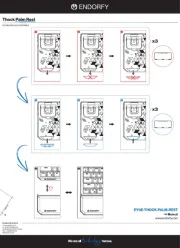
29 Juli 2025
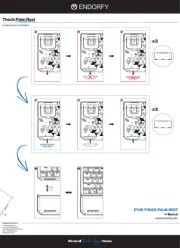
29 Juli 2025
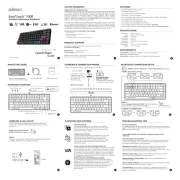
28 Juli 2025

28 Juli 2025
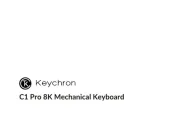
24 Juli 2025
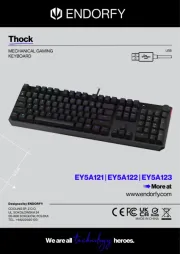
22 Juli 2025
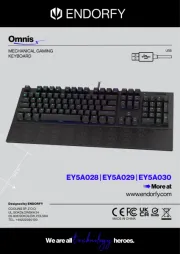
22 Juli 2025
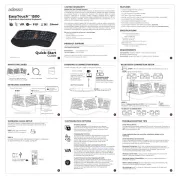
21 Juli 2025